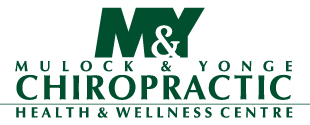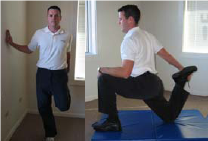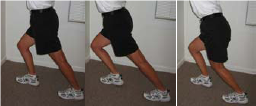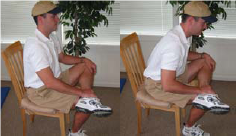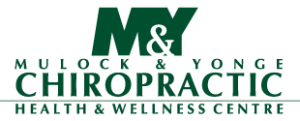If you haven’t visited a chiropractor before, you might be missing out.
Millions of people around the world have experienced the incredible benefits of chiropractic care.
One of the best things about chiropractic care is it’s a drug-free and surgery-free path to healing naturally. People have reported chiropractic benefits help to improve:
- Back Pain
- Headaches
- Ear Infections
- Neck Pain
- Arthritis and Joint Pain
- Scoliosis
- Asthma
- Blood Pressure
- Healthy Pregnancy
- Organ Function
- Surgery Prevention
Chiropractors pride themselves on taking a natural, drugless approach to helping their patients reach their health goals. Essentially, the basic principle upon which the entire profession is built is that the body has the amazing, innate ability to heal itself (under the right conditions) and it is the chiropractor’s job to help create an environment to facilitate this.
Because the nervous system controls every cell and organ in your body, chiropractors focus their attention on the health of your spine being properly aligned and, if there are shifts, helping the spine come back into alignment.
At the core of the numerous chiropractic miracle stories is a concept known as “vertebral subluxation”. When chiropractors use this phrase, they refer to mechanical compression and irritation to spinal joints and nerves.
Why Get Chiropractic Adjustments?
Many things can lead to a vertebral subluxation. Some of the more common causes I’ve found are:
- A vertebrae going out of place (“misalignment”) because of a slip or fall (ie. “macrotrauma”).
- The entire spine misaligning globally due to poor posture.
- Joint swelling caused by damage done to the intervertebral joint.
- An inflammatory response caused by a poor diet, lack of pure water or psychological stress.
- Osteoporosis or degenerative changes of the spine or intervertebral discs.
- Trigger points and tight back muscles that pull the vertebrae out of place.
Importance of Posture
Far too many live their lives hunched over and with their necks stuck out like turtles. Doctors call this “forward head posture”, and studies prove that for every inch your head sticks out from a true center of gravity, your neck bears an extra 10 pounds of stress. Just think about how common and dangerous this can be for your health!
During posture evaluations, chiropractors regularly observe many of their patients carrying their head two to three inches forward, which is an extra 20-30 pounds of pressure on their neck!
Finding a good chiropractor isn’t only key to correcting the damage caused by years of poor posture or trauma—it’s also important for everyone wanting to take a proactive approach to his or her health care. But don’t just take my word for it. Here is some of the medical research and studies proving the therapeutic benefits of chiropractic.
1. Sciatica
The European Spine Journal published the findings from a clinical trial last year uncovering how chiropractic adjustments resulted in a 72 percent success rate in treating sciatica and related symptoms compared to the 20% success from physical therapy and 50% from corticosteroid injections.
2. Low Back Pain and Neck Pain
In a study published in the British Medical Journal 2003, 183 patients with neck pain were randomly allocated to manual therapy (spinal mobilization), physiotherapy (mainly exercise) or general practitioner care (counseling, education and drugs) in a 52-week study.
The clinical outcome measures showed that chiropractic adjustments resulted in faster recovery than physiotherapy and general practitioner care. Moreover, total costs of the chiropractic-treated patients were about one-third of the costs of physiotherapy or general practitioner care.
Another study published in the Journal of Manipulative and Physiological Therapeutics found patients with chronic low-back pain treated by chiropractors showed greater improvement and satisfaction at one month than patients treated by family physicians. Satisfaction scores were higher for chiropractic patients.
A higher proportion of chiropractic patients (56% vs 13%) reported that their low-back pain was better or much better, whereas nearly one-third of medical patients reported their low-back pain was worse of much worse.
3. Headaches (Tension and Migraine)
Second only to back pain, headaches are one of the most common conditions regularly managed by chiropractors. At the time I conducted this research, over 230 peer-reviewed articles referenced chiropractic’s ability to help cure, prevent and ease the burden of headaches and migraines in people all across the globe! Compared to most medical treatments, few interventions can initiate headache relief like chiropractic adjustments can.
4. Colic and Ear Infections
A 2012 study published in the Journal of Manipulative Physiological Therapeutics found that chiropractic adjustments greatly reduced colic symptoms.
Although very few randomized control trials have been conducted describing the clinical effects of chiropractic care on children, literally scores of case studies have been documented that describe how children suffering from otitis media (ear infections), acid reflux and colic have experienced complete to near complete resolution after just a few visits.
5. Neurological Conditions
Not only are MRI scans revealing that cerebral spinal fluid and blood flow are markedly increased after a chiropractic adjustment, researchers are observing that cerebellar invagination (when the cerebellum drops down below the skull line) is being reversed and brain plaquing (common in multiple sclerosis patients is disappearing!)
6. Blood Pressure
In 2007, George Bakris, the world expert on hypertension, published a study with a team of researchers in the Human Journal of Hypertension proving that one upper cervical chiropractic adjustment had the same effect as two blood pressure-lowering drugs. Even more fascinating, the effects of just one adjustment lasted more than six months!
Compared to the placebo-treated patients, those who go the real procedure saw an average 14mm Hg greater drop in systolic blood pressure (the top number in a blood pressure count) and an average 8 mm Hg greater drop in diastolic blood pressure (the bottom blood pressure number).
7. Surgery Prevention
Chiropractic has long been heralded by natural health care providers as a natural method to prevent back surgery.
In fact, the Journal of the American Medical Association just recently published its low back pain guidelines and suggested that people suffering from back pain first try chiropractic before resorting to surgery.
8. Frozen Shoulder
Last year a clinical trial was published describing how patients suffering from the debilitating condition frozen shoulder responded to chiropractic care.
Of the 50 patients: 16 resolved completely, 25 showed 75% to 90% improvement, eight showed 50% to 75% improvement and one showed 0% to 50% improvement
9. Scoliosis
Chiropractic adjustments for scoliosis coupled with muscular rehabilitation techniques may help prevent the progression of scoliosis. Organizations like the nonprofit Clear Institute founded by Dr. Dennis Woggan have set out to empower health care professionals with an effective chiropractic system to treat people with scoliosis.
They’ve perfected a model and discovered that it is possible to effectively treat the condition without the use of restrictive braces or dangerous surgeries. In many case studies, participants have seen a 10% to 30% decrease in their scoliosis curvatures.
10. Athletic Performance
Because it is so effective at pain-based and pathological conditions, one of the most overlooked aspects of chiropractic care is that it enhances personal and athletic performance. Studies have shown that it:
- Reduces inflammatory cytokines
- Boosts your immune system
- Enhances pulmonary function
- Decreases mental tension
- Relieves muscle tension
- And can naturally increase your energy level
Studies have even proved, objectively and subjectively, that chiropractic patients experience “overall increased bodily function”, which includes bowel regularity and mental clarity.
Basically, because it helps place your body in the position where it can heal itself, chiropractic adjustments can free your immune system up to focus on keeping you healthy, which enhances your ability to think, move and perform.
This content is strictly the opinion of Dr. Josh Axe, and is for informational and educational purposes only. It is not intended to provide medical advice or to take the place of medical advice or treatment from a personal physician. Readers of this content are advised to consult their doctors or qualified health professionals regarding specific health questions. Neither the author nor publisher of this content takes responsibility for possible health consequences of any person or persons reading or following the information in this educational content. All readers of this content, especially those taking prescription or over-the-counter medications, should consult their physicians before beginning any nutrition or supplement or lifestyle program. Note: References for this content can be found at draxe.com
